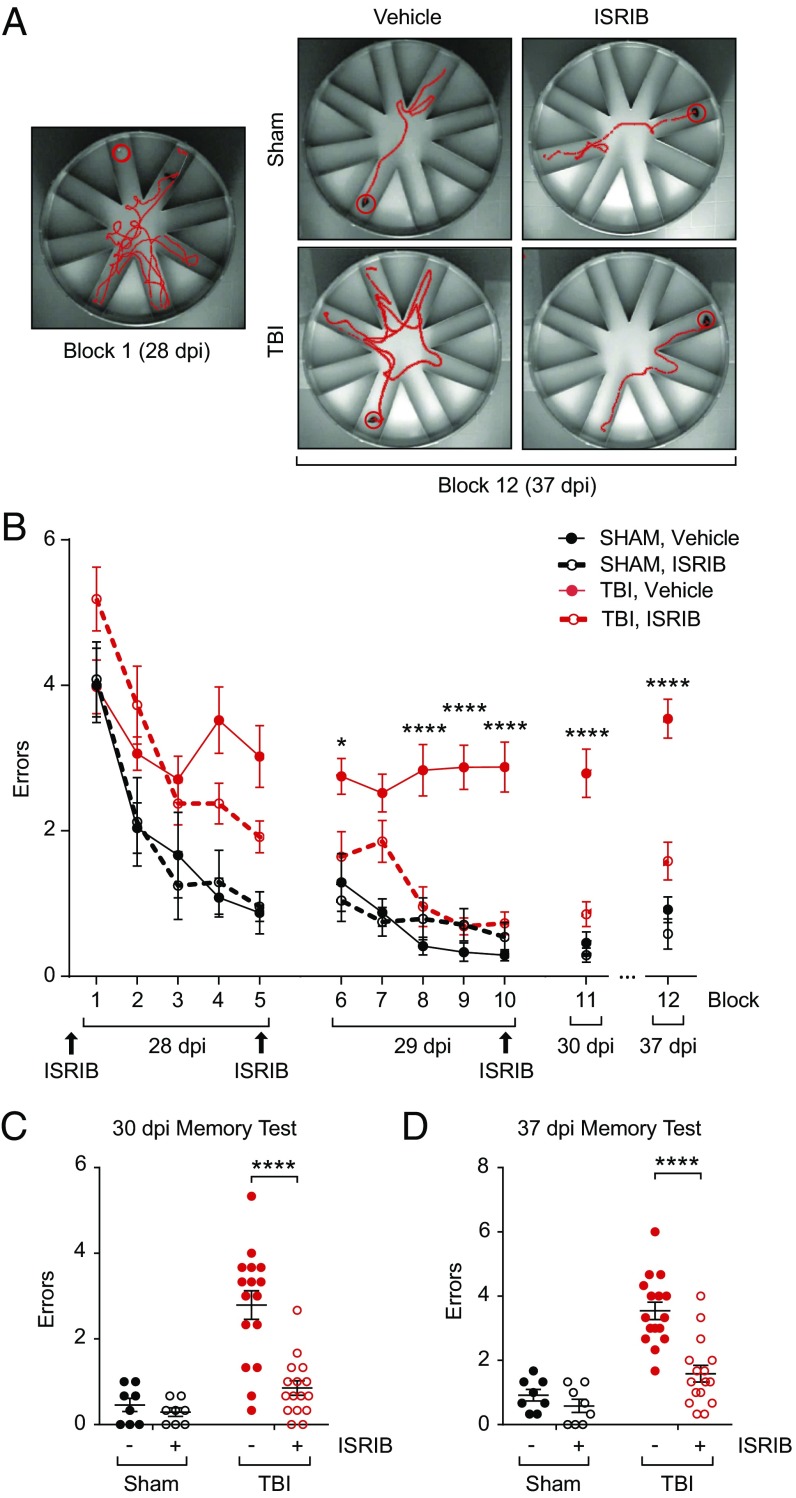Fig. 2.
ISRIB treatment rescues TBI-induced behavioral deficits on the radial arm water maze 28 d after focal TBI. (A) Representative track plots showing exploratory activity on the RAWM. Although all animals initially made multiple errors while locating the escape platform (block 1, Left), sham and ISRIB-treated TBI animals learned the escape platform location and therefore made fewer errors during the memory test 7 d after training (block 12, 37 dpi). Vehicle-treated TBI animals made more errors than animals in the other three experiment groups (Right). (B) Animals were i.p. injected (either vehicle or ISRIB) (2.5 mg/kg) the night prior to starting behavior (27 dpi) and after the last trials each day during training (28 and 29 dpi; n = 8 per sham group, n = 16 per TBI group). Animals ran 15 trials on each training day with the performance of every 3 trials averaged as a single block. Compared with vehicle-treated group (red solid circle, solid line), ISRIB-treated animals (red open circle, dotted line) made significantly less errors over the course of training and when memory was tested 24 hr (30 dpi) and 7 d (37 dpi) after training. Data are means ± SEM (Bonferroni post hoc test, TBI + vehicle vs. TBI + ISRIB; *P < 0.05, ****P < 0.0001). (C) Individual animal performance during the memory test 24 h after training (block 11, 30 dpi). Vehicle-treated TBI animals made significantly more errors than all other experimental cohorts. Data are means ± SEM (Bonferroni post hoc test; ****P < 0.0001). (D) Individual animal performance during the memory test 7 d after training (block 12, 37 dpi). Improvement in RAWM performance persisted in ISRIB-treated TBI animals. Data are means ± SEM (Bonferroni post hoc test; ****P < 0.0001).

